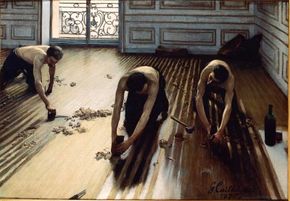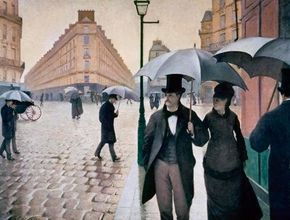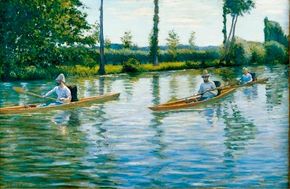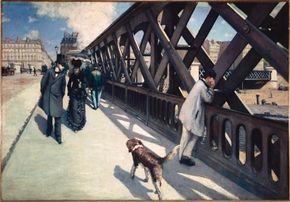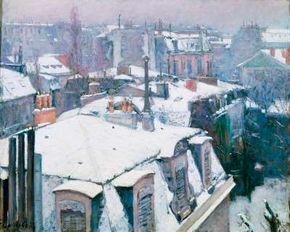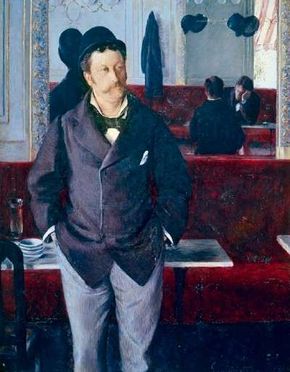Gustave Caillebotte (1848-94), a friend of Claude Monet's since 1873, was also a member of the Impressionist core.
Caillebotte's background as an engineer and architect was evident in his sleek urban views. Although trained as a naval architect, Caillebotte chose the city over the ocean. Being a true impressionist, he was fascinated with the changing image of the modern city.
Advertisement
As evident on the following pages, his subjects provided a true record of urban life: workmen sanding hardwood floors; a man at a balcony railing looking out on a broad avenue of pristine new apartment buildings. Click on the links below to learn more.
- The Floor Scrapers: With this painting, Gustave Caillebotte made his Impressionist debut at the second Impressionist exhibition.
- Paris Street; Rainy Day: Looking at this painting, Emile Zola predicted that Gustave Caillebotte would prove to be the most innovating in the Impressionist group. Decide for yourself on this page.
- Boating on the Yerres (Perissoires sur l'Yerres): In this boating scene, Gustave Caillebotte's Impressionist visions truly shine through. See how.
- Le Pont de l'Europe: Check out Le Pont de l'Europe and learn how Gustave Caillebotte used the cool palette to convey the city's industrial make-up.
- Rooftops in the Snow, Paris: Learn how this Impressionist painting was one of 23 works that Gustave Caillebotte showed at the fourth Impressionist exhibition -- and the most daring.
- In a Café: Gustave Caillebotte's depictions of city life possessed a strong sense of immediacy. See this Impressionist painting.
The first Caillebotte painting in this article is The Floor Scrapers, which is truly a modern painting both in terms of subject matter and composition.
For more on Impressionist paintings, artists, and art history, see:
Advertisement
